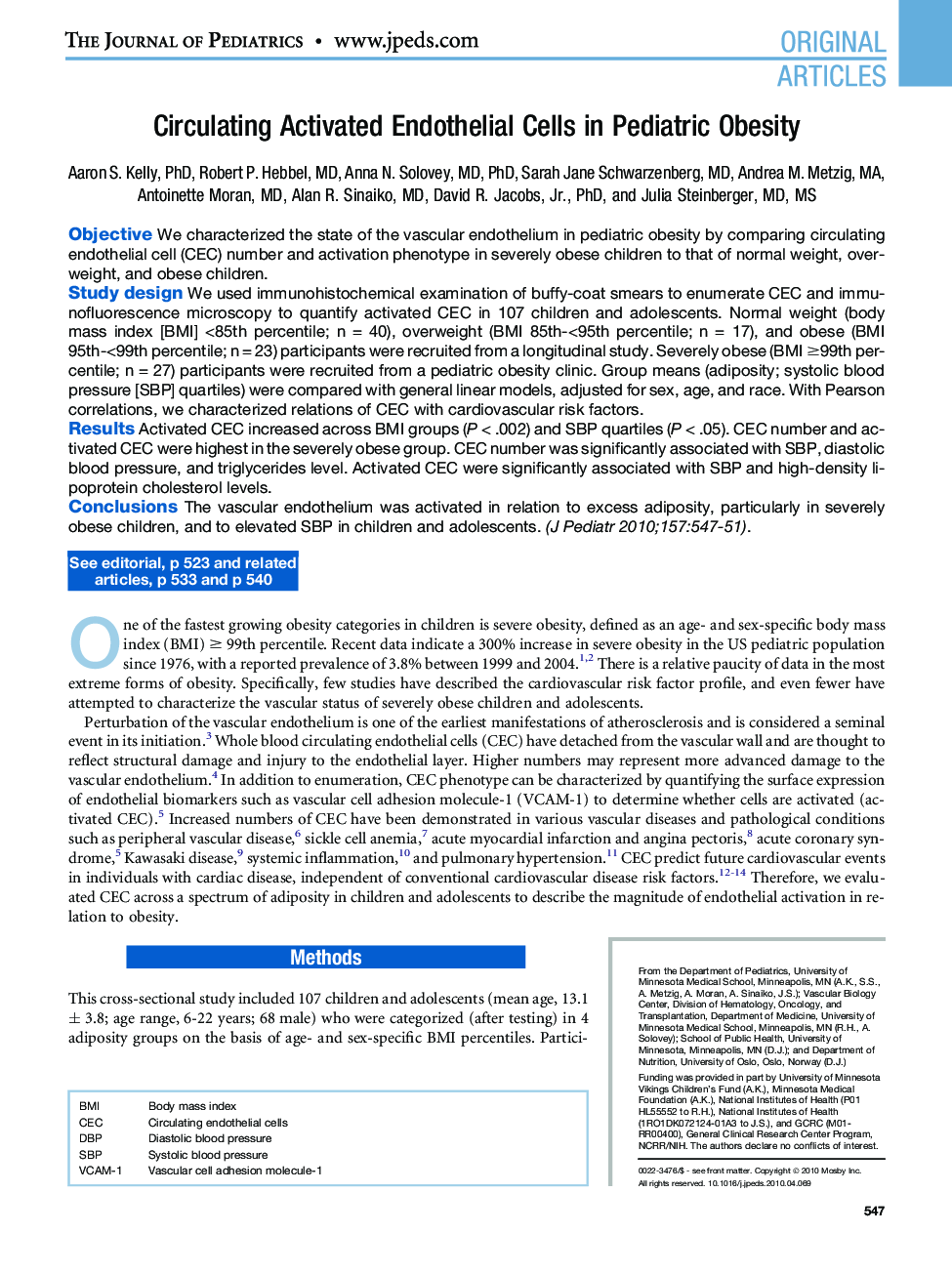| Article ID | Journal | Published Year | Pages | File Type |
|---|---|---|---|---|
| 4167627 | The Journal of Pediatrics | 2010 | 5 Pages |
ObjectiveWe characterized the state of the vascular endothelium in pediatric obesity by comparing circulating endothelial cell (CEC) number and activation phenotype in severely obese children to that of normal weight, overweight, and obese children.Study designWe used immunohistochemical examination of buffy-coat smears to enumerate CEC and immunofluorescence microscopy to quantify activated CEC in 107 children and adolescents. Normal weight (body mass index [BMI] <85th percentile; n = 40), overweight (BMI 85th-<95th percentile; n = 17), and obese (BMI 95th-<99th percentile; n = 23) participants were recruited from a longitudinal study. Severely obese (BMI ≥99th percentile; n = 27) participants were recruited from a pediatric obesity clinic. Group means (adiposity; systolic blood pressure [SBP] quartiles) were compared with general linear models, adjusted for sex, age, and race. With Pearson correlations, we characterized relations of CEC with cardiovascular risk factors.ResultsActivated CEC increased across BMI groups (P < .002) and SBP quartiles (P < .05). CEC number and activated CEC were highest in the severely obese group. CEC number was significantly associated with SBP, diastolic blood pressure, and triglycerides level. Activated CEC were significantly associated with SBP and high-density lipoprotein cholesterol levels.ConclusionsThe vascular endothelium was activated in relation to excess adiposity, particularly in severely obese children, and to elevated SBP in children and adolescents.
